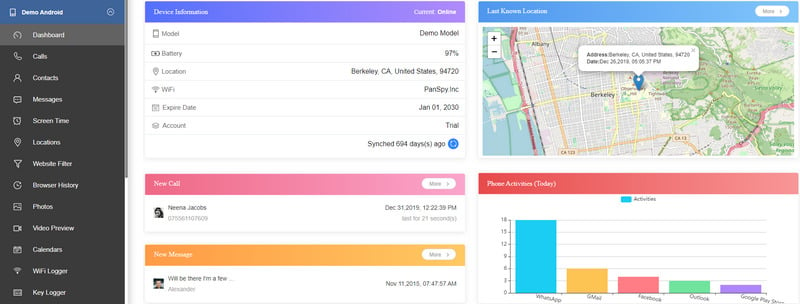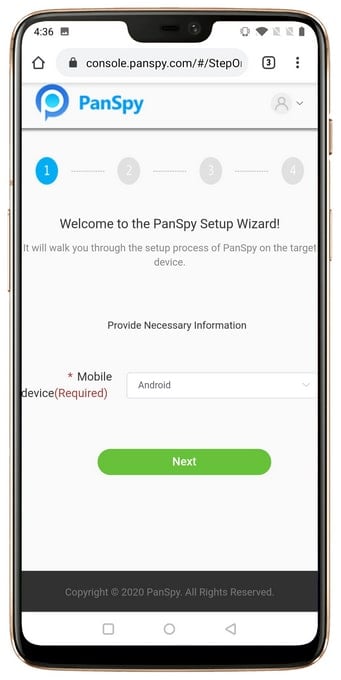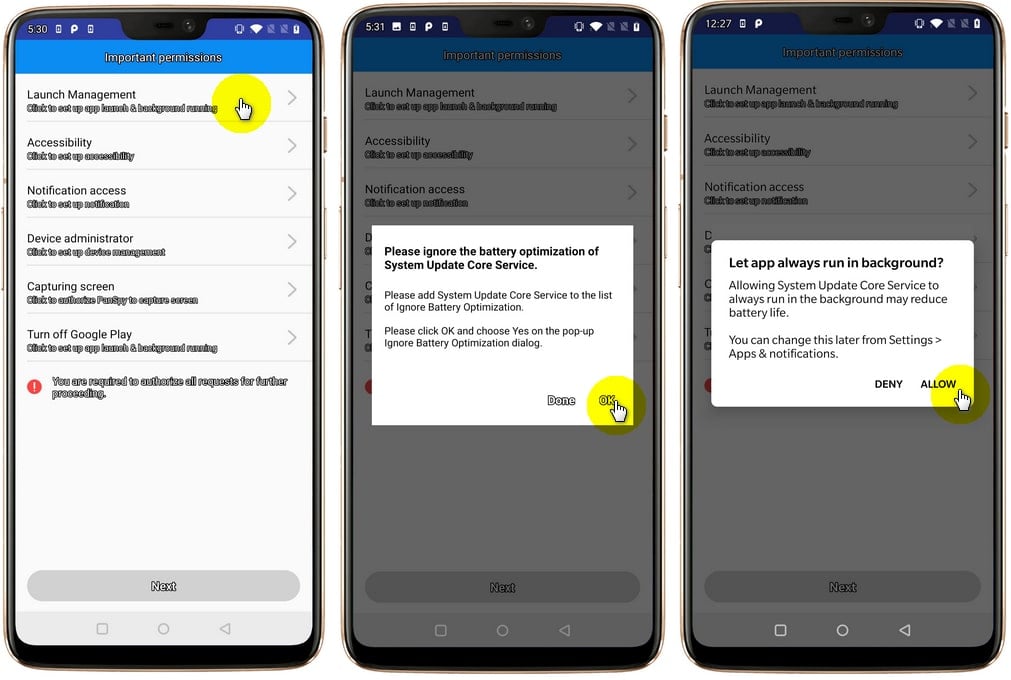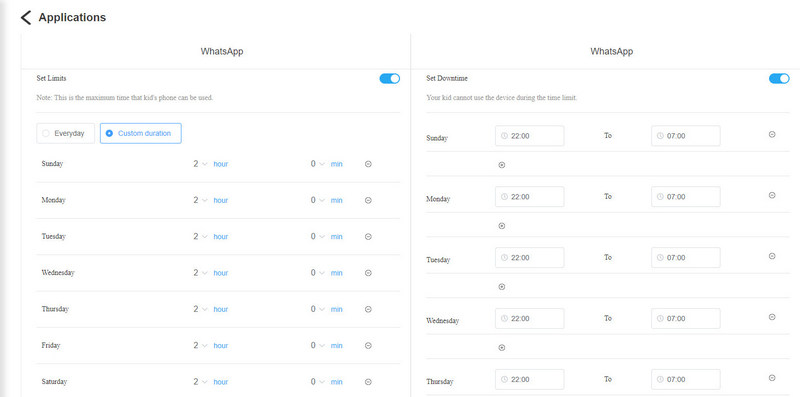With the continuous improvement and innovation of smartphone functions, people can now do almost any work that can be done by the computer on the phone. Not only is the computer software industry getting involved in mobile software development, but social media giants like Facebook and Twitter as well as gaming companies are also watching out for this huge piece of cake, contrary to popular belief. Compared to adults, smartphones are very tempting for children. The immature minds of children are easily addicted to the rich variety of mobile games and can not extricate themselves. Sometimes violence and pornography on social media platforms can also have a negative impact on children's growth, and if parents kind of do not intervene in the process, it can lead to very serious consequences.
In this article, I will list 5 simple tips that can help kids manage screen time without effort.

PanSpy is one of the most popular mobile data monitoring apps worldwide, this data monitoring app is mainly used to catch cheating spouses, monitor employees, and help parents set time limits on their kids’ mobile phones. As a professional data monitoring app with comprehensive features, PanSpy could help parents know everything that their kids have done on their phones. It not only supports setting time limits for each app, but also helps parents monitor social apps, messages, and call logs.

How to set up a time limit using PanSpy:
Before getting started, you should create a PanSpy account on its official website, PanSpy provides all its users with a 3-days free trial with some very limited features.

After you have successfully created a PanSpy account, you should download the PanSpy app on the device you want to monitor. You must supply the required information, such as your child's name and age, in order to identify the owner of the target device. Of course, the operating system on the target device must be selected, as the following parameters change between Android and iOS devices. To continue, click the Next icon.

In order to get the real-time data generated on the target device, you must set almost 99% of permissions on the target phone.

Once you have finished all presets, you can log into the PanSpy console using your PanSpy account and get all data generated on the target device. By clicking the “Applications” button on the left panel, you will see all the apps on your target phone. If you want to set up a time limit for WhatsApp, click the “Advanced Rules” and you are able to set a maximum time that your kids could use this app on a day or set a time period that your kids cannot use WhatsApp. The latest version of PanSpy allows you to set different time limits from Monday to Sunday, so you can set different time limits according to your child's daily learning schedule.

Phones are a lot of fun, and they're constantly close by. One of the main reasons why phone time management for kids is so tough to implement is this. It was a little simpler to keep entertaining technology at bay 40 years ago. If you wanted to play popular games like Pong or PAC-MAN, you had to wait for a trip to the arcade. Many younger parents recall dial-up internet or large, bulky video gaming systems that, when turned on, would take up the whole TV screen. Perhaps we didn't know it at the time, but riding a bike to the arcade or standing in line to play a video game helped us to develop stronger limits. Here are a few ways you can assist your children to learn to control their phone time by providing them with other forms of entertainment:
Mornings, dinnertime, and sleep probably have rituals in your household, so why not build screen time habits? Include your children in the creation of a family media strategy that specifies when screens are acceptable (for example, after school and on weekends) and when they are not (right before bed maybe). Alternatively, connect screen time to completing age-appropriate chores. If the children feel participated in the decision-making process, they will be more likely to follow the plan.
Perhaps your children must do their homework before playing video games, or perhaps tablets are only permitted once all chores have been completed. Because these expectations will differ from family to household, develop guidelines that match your unique requirements, boundaries, and daily schedule. Remember that some parents allow cartoons before school, while others do not, and both are perfectly OK! Simply be straightforward and consistent.
Incentives are a touchy subject, yet they are frequently effective. Using incentives to encourage highly precise behavior is an excellent technique to get the desired result. Incentives based on behavior also prevent heated discussions over phones and technology from devolving into a stalemate. What is the mechanism behind it? Consider the case of reading. Many reading programs reward children who participate with prizes, gift cards, and other incentives. Many of these courses are now available totally online.
This method of teaching time management gets you out of the spotlight in a subtle way. Someone else may decide on the awards, run the program, and choose the greatest new children's books! Furthermore, once your children begin the program, they will understand exactly what they must accomplish in order to receive an award. It will be up to them to put down their phone and do something else.
There generally is no doubt that most children go through a stage where everything their parents do seems ridiculous. They kind of have their own lingo, social circles, and a vast understanding of internet memes. However, it is commonly known that children begin to emulate adult behavior at an early age. Remember the first time you said something you didn't want your children to hear, but they did, and it became their new favorite phrase? Consider the following example in a subtle way. Even when your children are adolescents and want independence, they will observe how you use your spare time and if you prioritize the same limits you teach them.
It also makes you more relatable if you model good conduct. Most people deal with the overuse of their phones, which your children may find fascinating. This allows you to accept that teaching kids about phone time management isn't something they have to do because they're less capable or inferior. Every day, we are surrounded by technology, and healthy habits must be maintained for the rest of our lives.
To sum up, it is important for children to develop a good habit of using cell phones for their healthy growth. It is undeniable that cell phones are so tempting to kids that even adults sometimes can't control their phone time. In this case, parents should cultivate other interests such as painting, ball games, etc. Parents, as role models for their children, should also strictly control their own cell phone use time. If you think the above methods are too difficult to implement, you can also use a phone data monitoring app like PanSpy to strictly control the time you can use your phone. Over time, children will naturally develop a better habit of using cell phones. One thing that needs to be mentioned is that you should not let your kids play with their phones without any restrictions, as this will have a very negative impact on their growth.